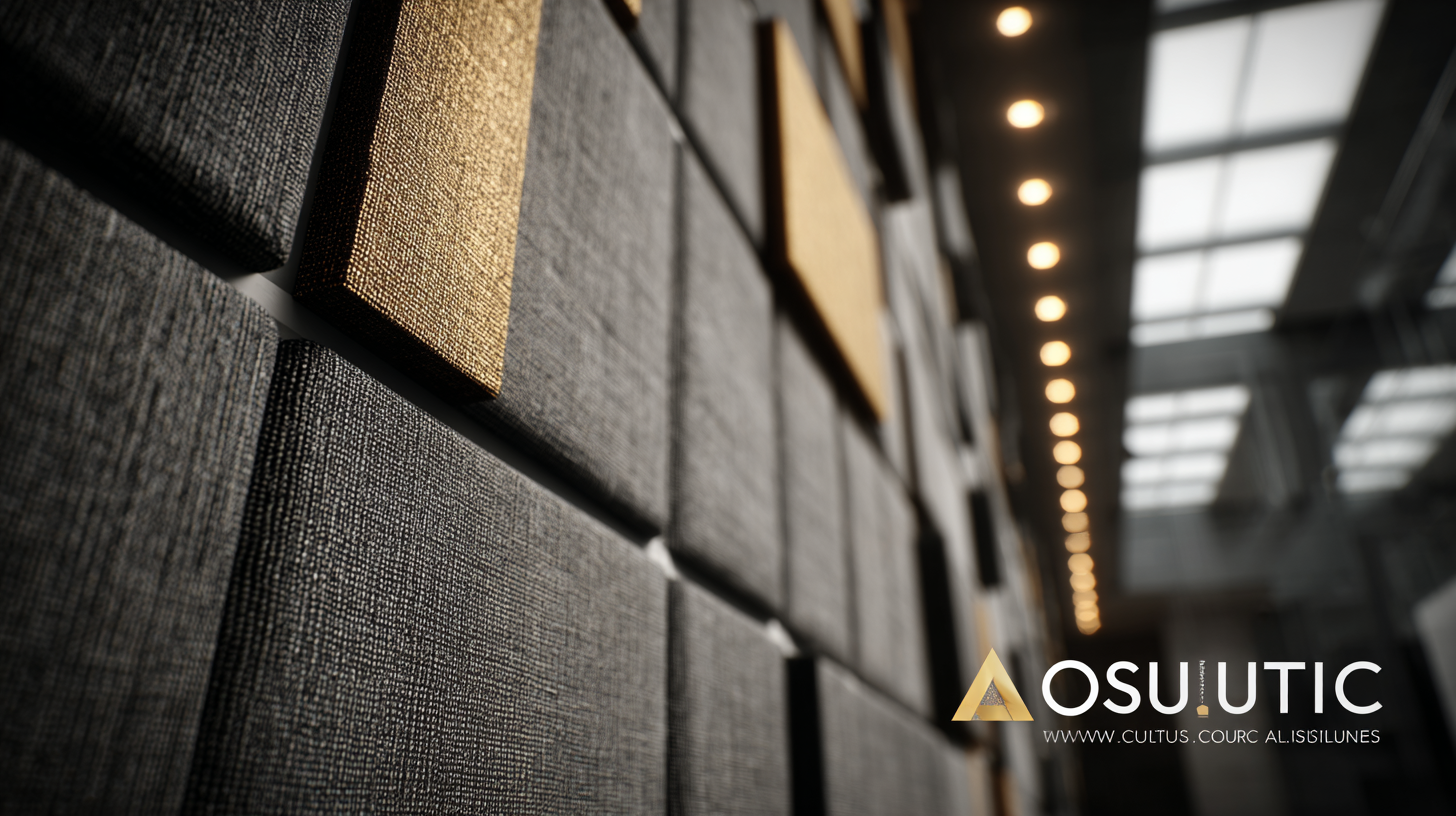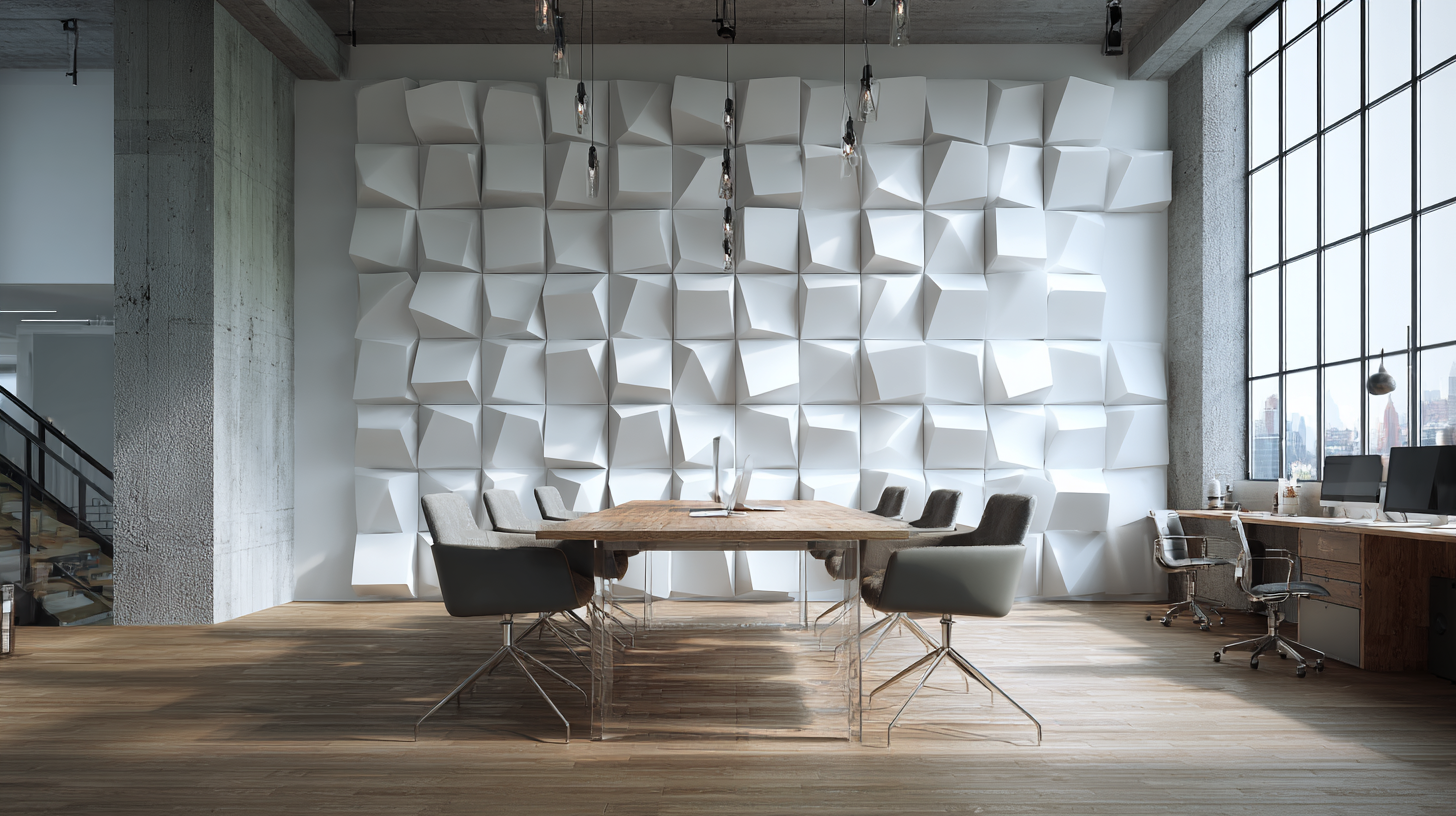Shandong Xiangying New Materials Technology Co., Ltd.
Shandong Xiangying New Materials Technology Co., Ltd.
In the quest for optimal sound management in various environments, Acoustic Wall Panels have emerged as a crucial solution for architects, designers, and facility managers globally. According to a recent report by Market Research Future, the global acoustic panel market is projected to reach USD 1.13 billion by 2025, growing at a CAGR of 6.25% from 2019 to 2025. This surge is primarily driven by increasing noise pollution and the rising demand for effective noise control in both commercial and residential spaces. Acoustic Wall Panels not only enhance acoustic quality but also contribute to aesthetic appeal, making them an essential consideration for global buyers seeking to create harmonious environments. By understanding the technical specifications that define high-quality acoustic panels, stakeholders can unlock their full potential and provide solutions that cater to the diverse needs of contemporary spaces.

Acoustic wall panels play a crucial role in enhancing sound quality in various environments, from recording studios to open office spaces. These panels are designed to absorb, diffuse, or reflect sound waves, significantly reducing noise levels and improving overall acoustic performance. Various types of acoustic wall panels are available, including foam, fabric-wrapped, and wooden panels, each serving specific functions based on construction material and design. Understanding these variations is vital for global buyers seeking to optimize their spaces acoustically.
When choosing the right acoustic wall panels, it’s essential to consider several technical specifications. These include sound absorption coefficients, NRC ratings, and panel thickness, which all contribute to how effectively the panel will control sound. Additionally, factors such as fire resistance, aesthetic appeal, and ease of installation can influence purchasing decisions. By familiarizing themselves with these specifications and the functions of different panel types, buyers can make informed choices that fulfill their acoustic needs while enhancing the visual character of their spaces.
| Specification | Description |
|---|---|
| Material | High-density polyurethane foam |
| Thickness | 1 inch (25 mm) |
| NRC Rating | 0.95 (Excellent sound absorption) |
| Fire Rating | Class A flame spread rating |
| Size Options | 24"x24", 48"x24", custom sizes available |
| Weight | Approx. 1.5 lbs (0.68 kg) per panel |
| Color Options | Available in various colors, including black, white, and grey |
| Installation Method | Adhesive or hook-and-loop fasteners |
| Usage | Suitable for home theaters, recording studios, and offices |
| Eco-Friendliness | Made from recycled materials, VOC-free |
When selecting acoustic wall panels, understanding the essential technical specifications can significantly impact your acoustic treatment's effectiveness. Buyers should prioritize the panel's Noise Reduction Coefficient (NRC), which indicates how well a panel absorbs sound. Look for products with higher NRC ratings, typically above 0.7, to ensure optimal sound absorption. Additionally, consider the thickness and density of the material, as thicker panels generally provide better performance in reducing lower frequency sounds.
Another critical specification is Fire Safety Standards. Ensure that the panels meet relevant fire regulations, which will not only provide safety but also influence their placement in various environments like schools or offices. When examining absorption types, opt for panels that offer a mix of porous material and bass traps for balanced sound management.
**Tips:** Always request samples to assess both the aesthetic qualities and acoustic performance. Comparing several brands can also reveal hidden differences in durability and maintenance needs, which are integral to long-term satisfaction. Consider the installation method as well; some panels require professional installation while others can be easily mounted, catering to varying project budgets and timelines.
When selecting acoustic wall panels, understanding sound absorption ratings is crucial for achieving optimal acoustic performance in any space. These ratings, often expressed as Noise Reduction Coefficients (NRC) or Sound Absorption Class A, indicate how effectively a material reduces sound reflections and minimizes echo. To assess a panel’s absorption capabilities, look for independent testing that adheres to ASTM E423, as this ensures the credibility of the stated ratings. Higher NRC values, typically ranging from 0.70 to 1.00, suggest superior sound absorption, making them ideal for environments like recording studios, auditoriums, and open office spaces.
Another critical specification to consider is the panel's thickness and density, which directly impacts its performance across different frequencies. Thicker panels tend to absorb lower frequencies better, while denser materials can enhance overall sound control. Additionally, consider the panel's material composition; options like fiberglass, foam, and polyester each bring unique properties that can cater to specific acoustic needs. By carefully evaluating these sound absorption ratings and material characteristics, global buyers can make informed decisions that lead to effective sound management and improved acoustic environments.
 Acoustic wall panels have gained significant traction in both commercial and residential spaces, driven by their ability to enhance sound quality and reduce noise pollution. When considering the best materials for these panels, it is crucial to compare various fabrics and finishes.
According to a report by the Acoustical Society of America, different materials can influence sound absorption effectiveness, with certain fabrics, like polyester and wool, being favored for their superior acoustic properties and aesthetic versatility.
Acoustic wall panels have gained significant traction in both commercial and residential spaces, driven by their ability to enhance sound quality and reduce noise pollution. When considering the best materials for these panels, it is crucial to compare various fabrics and finishes.
According to a report by the Acoustical Society of America, different materials can influence sound absorption effectiveness, with certain fabrics, like polyester and wool, being favored for their superior acoustic properties and aesthetic versatility.
Recent trends highlight the shift towards eco-friendly materials, mirroring broader industry movements, such as those seen in sustainable product innovations. An example of this is the Tyre Collective's initiative of turning microplastic tyre wear particles into usable products.
In the context of acoustic panels, integrating recycled materials not only improves environmental sustainability but can also appeal to a growing demographic of eco-conscious consumers. The use of innovative materials like these could significantly impact the market, aligning the performance of acoustic panels with the demands of modern aesthetics and sustainability.
When it comes to enhancing sound quality in any space, the proper installation of acoustic wall panels is crucial. According to a report by the Acoustic Society of America, improperly installed panels can reduce their effectiveness by up to 30%. To avoid this, always ensure that panels are placed at optimal heights, typically between 3 to 5 feet from the floor, which allows them to capture sound reflections effectively. Furthermore, consider the room's specific acoustics before installation; professional assessments can often pinpoint the most problematic areas where sound waves collide, which are ideal spots for panel placement.

One of the best practices for maximizing the effectiveness of acoustic panels is to create a balanced sound environment. Soft surfaces, such as carpets and fabric furniture, complement wall panels by absorbing sound. Consider placing panels in first reflection points, which are the areas where sound waves first bounce off hard surfaces before reaching the listener’s ears. Additionally, maintaining a clean installation space is crucial; dust and debris can diminish adhesive effectiveness, leading to panels that don't adhere properly. By following these tips, global buyers can ensure they unlock the full potential of their acoustic wall panels.
